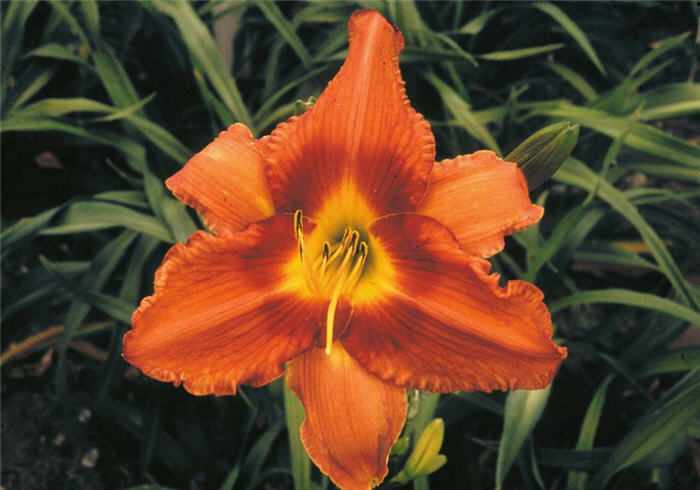| Botanical Name: Hemerocallis spp | |
| Common Name: Daylily |

-
Anatomy
-
Culture
-
Design
Plant Type
Ground cover, Perennial
Height Range
1-3'
Flower Color
Orange
Flower Season
Spring, Summer, Fall
Leaf Color
Green
Bark Color
n/a
Fruit Color
n/a
Fruit Season
n/a
Sun
Full, Half
Water
Medium
Growth Rate
Fast, Moderate
Soil Type
Sandy, Clay, Loam, Rocky, Unparticular
Soil Condition
Average, Rich, Poor, Well-drained
Soil pH
Acid, Neutral, Basic
Adverse Factors
n/a
Design Styles
English Cottage, Formal, Japanese, Meadow, Mediterranean, Ranch, Seascape, Spanish, Tropical, Water Garden, Wetlands, Native Garden, Woodland
Accenting Features
Showy Flowers
Seasonal Interest
Spring, Summer, Fall
Location Uses
Entry, Perennial Border, Shrub Border, Foundation, Lawn, Parking Strip, Patio, Park, Parking Lot, Raised Planter, Roadside, Swimming Pool, Walkways, With Rocks
Special Uses
Container, Erosion Control, Filler, Mass Planting, Naturalizing, Medicinal
Attracts Wildlife
Birds, Hummingbirds, Butterflies, Wildlife
Photographer: Greenwood Daylily Gardens
-
Description
-
Notes